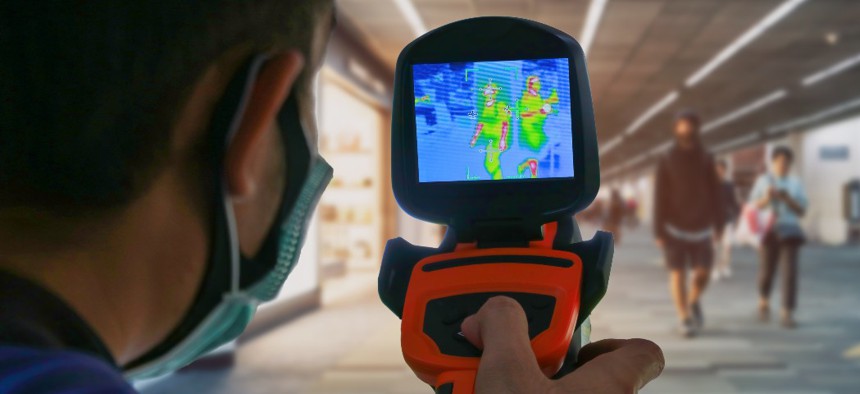U.S. Biothreat Monitoring Improved But Needs Technological Upgrades

TravelCouples/Getty Images
The improvements hinge on better data and enhanced technology, according to testimony given before the Senate Committee on Homeland Security and Governmental Affairs.
A Senate committee hearing on Thursday probed the U.S. Department of Homeland Security’s overall readiness against advanced biological threats.
The U.S. Senate Committee on Homeland Security and Governmental Affairs focused on a report from the U.S. Government Accountability Office that indicated that DHS’ biosurveillance programs, most notably the Biological Detection for the 21st Century Program, lack the technology required for their missions.
Biothreats here are defined as any given disease-causing agents, including bacteria, viruses or toxins. They can originate naturally or can be man-made, and could potentially harm humans, plants and animals alike.
Christopher Currie, the director of the Homeland Security and Justice office within the GAO, discussed his office’s concern about U.S. preparedness for potential “large-scale biological events,” and offered recommendations for improvement, many centered on modernization.
“We found that BD21 faces a number of technology challenges, mainly the inherent limitations in the technology and the uncertainties––this is important––of combining these technologies for use in the domestic environment in the U.S., like in train stations and sporting events,” Currie said.
One of the most common functions of these technologies includes biodetection capabilities and differentiating between real threats and false alarms. Other technologies featured in BD21 include data analytics tools, biothreat detectors and collectors, and field screening devices that specifically target aerosolized biological agents.
The GAO’s original report on DHS’s program from May 2021 found that among other problems, the aerosol detector frequently reported false positives.
Currie acknowledged that deploying technology like these that could detect a biothreat is challenging, particularly in public places.
“Applying some of these technologies in the homeland is actually I think one of the biggest challenges because while basic research is part of the solution, when you apply these technologies to train stations and subway stations and crowded places in this country, you just can't have false alarms. That doesn't work,” he said.
He added that the COVID-19 pandemic has alerted society, specifically the federal workforce, to how potent biothreats can be, and said that he believes the U.S. is better equipped to incorporate preventative measures into their operations.
“I think the good news is that we got a strategy and a steering committee was developed to try to have that kind of coordination,” Currie said. He did note, however, that more coordination across federal agencies needs to occur to delineate resources to relevant biothreat monitoring programs.
Currie also noted to Chairman Sen. Gary Peters, D-Mich., that more comprehensive data collection is required to gauge how a biodetection program could impact Americans nationwide. This would ideally illuminate which demographics are most at risk for biothreats and how to make a biothreat response more effective.
The GAO report also encouraged DHS to conduct technological readiness assessments during procurement processes to ensure high levels of functionality.
Despite these outstanding issues, Currie said the COVID-19 pandemic has forced federal agencies to be more cognizant of biological threats.
“Overall I think the office is on a better track and is beginning to mature now several years after being created,” he said, noting that leadership is communicating with stakeholder more frequently. “I think the leadership there is committed to implementing our past recommendations, and more importantly sticking to best practices that have helped other organizations reorganize and transform effectively in the government.”
NEXT STORY: DOJ's 3-year roadmap to zero trust






